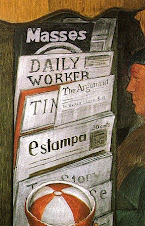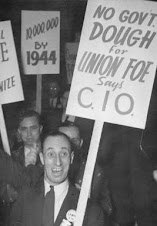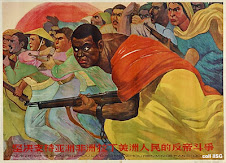By Stephen Millies
Published Jun 23, 2010 8:48 PM
The U.S. government launched the Korean War 60 years ago on June 25, 1950. During three years of massive air attacks and a huge land invasion, more than three million Korean civilians were killed, including hundreds of thousands burned to death by napalm.
U.S. Air Force planes dropped 420,000 bombs on the 400,000 inhabitants of Pyongyang, capital of the Democratic People’s Republic of Korea — the socialist northern half of the Korean peninsula. According to historian Bruce Cumings, the Pentagon came close several times to dropping nuclear bombs on the DPRK.

Tens of thousands of Koreans had earlier been incinerated in the U.S. A-bomb attacks on Hiroshima and Nagasaki. A least a quarter of the victims there were Koreans used as slave labor by the Japanese imperialists.
It is now nearly 60 years since the U.S. finally had to abandon its immediate goal of conquering all of Korea and signed an armistice in 1953, yet it still occupies South Korea with 29,000 troops. The U.S. Army’s Yongsan Garrison occupies 620 acres in the middle of Seoul. It’s as if a foreign army occupied Central Park in New York City.
The DPRK continues to be a Pentagon target. No country is slandered more by the U.S. corporate media.
Who started the war?
The biggest lie is that the DPRK started the war by invading South Korea in 1950. This is no truer than saying that Abraham Lincoln “invaded” the U.S. South.
The Soviet Red Army drove Japan out of northeastern China and Korea in 1945 with the help of Chinese and Korean guerrillas. Under agreements between the U.S. and the Soviet Union, Korea was to be temporarily divided.
U.S. Army Col. Dean Rusk drew the demarcation line on the 38th parallel. As secretary of state in the 1960s, Rusk was to help lead the dirty war against Vietnam.
Japan had annexed Korea in 1910 with the approval of the U.S. government. Theodore Roosevelt “gave” Korea to Japan in the treaty that ended the war between Czarist Russia and Japan in 1905.
The Korean people resisted Japanese rule, which was as vicious as the U.S. occupation of the Philippines or the European colonies in Africa. Two million Koreans joined the March 1, 1919, movement for independence. More than 7,000 were killed.
The Korean people launched an armed struggle for freedom. South Korean textbooks concede the most famous guerrilla commander was communist leader Kim Il Sung.
The liberation forces in northern Korea encouraged people to organize themselves. More than 600,000 workers joined unions. Two and a half million acres of land were given to 750,000 peasants.
It was a different story in the South under U.S. rule. Gen. John R. Hodge kept former colonialist Japanese officials and their Korean collaborators. He even tried to retain Japan’s colonial governor.
It was as if the Nazis were allowed to continue running their concentration camps after World War II.
Strikes were banned in the South on Dec. 8, 1945, by the U.S Army. That same month the grassroots People’s Republic of Korea and its people’s committees were outlawed. Martial law was declared in 1946.
President Harry Truman installed Syngman Rhee as dictator. South Korea’s Truth and Reconciliation Commission recently estimated that Rhee killed from 100,000 to 200,000 political prisoners.
Rhee bragged about invading the North. “South Korea’s neurotic right-wing government leaders clamor stridently for United States help to ‘unify’ Korea — that is, for the South to conquer the North,” wrote Andrew Roth in the Nation magazine (Aug. 23, 1949).
Truman emissary John Foster Dulles went to South Korea five days before the war erupted. Dulles had been managing partner of Sullivan & Cromwell, the Rockefellers’ law firm and would become President Dwight Eisenhower’s secretary of state.
Dulles egged on Rhee, who had constantly launched attacks on the North. A half-billion dollars had been lavished on the South Korean puppet army and it was expected to roll over the North.
Instead the DPRK, under Kim Il Sung’s leadership, counterattacked. Seoul was liberated within a week as the puppet army crumbled. The Korean People’s Army was welcomed everywhere as it advanced.
Anti-communist crusade
Congress approved $12 billion for war — worth $108 billion today — for what Truman called a “police action.” The only dissenting vote was East Harlem American Labor Party representative Vito Marcantonio.
With People’s China kept out of the United Nations until 1971, Truman was able to use the U.N. as a cover for his invasion.
The Korean War was Wall Street’s response to the Chinese Revolution and colonial revolts sweeping the globe. It heightened the anti-communist witch hunt that led to Ethel and Julius Rosenberg’s lynching in the electric chair on June 19, 1953.
The Korean War was a racist war. Black leaders like Paul Robeson and NAACP founder W.E.B. Du Bois opposed it.
Du Bois got 200,000 votes running as an anti-war candidate in New York’s 1950 U.S. Senate election. A highlight was a concert for Du Bois in Brooklyn’s Bedford-Stuyvesant neighborhood, a Black community, featuring jazz saxophonist Charlie Parker.
No peace treaty
Truman appointed Gen. Douglas McArthur as commander in Korea. McArthur in 1932 had ordered veterans bayoneted when they went to Washington, D.C., seeking promised benefits. With the Pentagon pouring in hundreds of thousands of troops, McArthur advanced to the Chinese border.
Chinese volunteers, aiding their Korean sisters and brothers, counterattacked and helped drive McArthur out of northern Korea. Among the Chinese soldiers who gave their lives for Korea was Mao Anying, a son of Mao Zedong.
McArthur was fired by Truman for insubordination — he had advocated dropping atomic bombs along the Chinese border — but only after the president got the consent of the Joint Chiefs of Staff.
Pentagon brass regarded the armistice signed on July 27, 1953, as a defeat. The U.S. still refuses to sign a peace treaty with the DPRK.
After Che Guevara toured the world in 1960, he said that the most remarkable person he had met was Kim Il Sung. Since the death of Korea’s “Great Leader,” Kim Jong Il has carried forward his policies.
Like Cuba and Algeria, the DPRK offered refuge to members of the Black Panther Party.
People’s Korea wants peace but has been forced to develop nuclear weapons in order to defend itself. The DPRK will never surrender.
Hands off Korea!
Articles copyright 1995-2010 Workers World. Verbatim copying and distribution of this entire article is permitted in any medium without royalty provided this notice is preserved.










































No comments:
Post a Comment